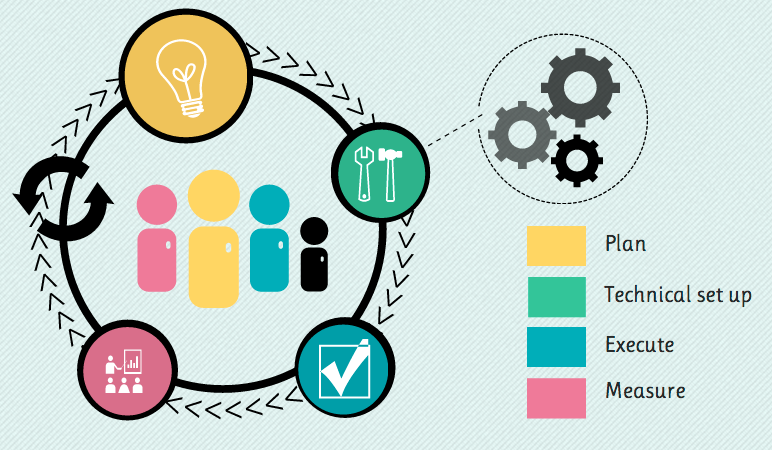Get WISER with Your AI Prompts - A guide for sales managers
Everyone’s wittering on about AI like it’s the second coming. But here’s the rub: if you give it half-baked prompts, you’ll get half-baked answers....
3 min read
Christabelle Tani 13/06/2013 8:41:00 AM


The task of marketing to a B2B buyer is complex, because you, the seller, must understand the buyer's questions (AND the questions of other 'influencers' the main buyer relies on consulting) throughout the buying journey.
Many B2B marketers seem to respond by complicating their language and message by wrapping it up in jargon laden corporate speak, especially in the middle and lower funnel, when they retreat quickly to the safety of "product speak" instead of focusing on getting the sequence of messaging right.
Here's what a typical content marketing journey is like for B2B marketers (gleaned from experience doing content marketing for ourselves and our clients):
The plan is the most important piece of the puzzle to get right, because it informs the rest of your actions. You must establish:
Spend as much time as needed on this (especially the buyer persona part), because if you get it wrong, you could waste months of time and energy.
This may be the less glamourous part of the process. It's also the reason why it's so essential for marketers these days to be technically competent.
This is where your marketing automation platform functionality comes into its own. (What do you mean you don't have a marketing automation platform? Seriously, you need to fix that. Now.)
B2B marketers must get the campaign execution components ready, like:
Be uber-logical in your design. It will pay great dividends later on. Avoid needless complication. Start simple and add layers of complexity as you go. Get to know the capabilities of your automation platform well to make maximum use of its features and know its limits.
So you have a solid plan now comes time to execute. This can be daunting.
In most engagements we help our clients figure out what to prioritise, because unless you have an army of helpers, it's going to be almost impossible to do it all at once.
Here is a simple example, if you have 60% of the content needed for Persona A, and 40% of the content needed for Persona B, then focus on creating the full suite of content for Persona A first. You might even want to postpone creating Persona B's content until after you've run Persona A's campaigns. After all, you may learn a few things that improve your campaigns for Persona B.
Better one complete content marketing plan than two or three partially completed plans. This approach leads to lots of poorly qualified prospects being either ignored by marketing, falling ino the middle of the funnel chasm, or being force fed to sales despite being unqualified, wasting their time and damaging your reputation.
If you're using any form of marketing software then you're probably up to your neck in data. Having data is not the problem, making sense of the data and deciding on a course of action is a different story.
For each content component you should ensure you can measure its conversion rate, but that's meaningless if you don't:
With social media be careful to only report on metrics that can be tied to revenue. Hubspot wrote a great post about that recently which you can view here.
The title of this blog is a little misleading, because there should be no finish but a constant cycle of measurement and improvement.
So you know what to do with the content that is working - keep doing it, in fact do more of it. But with the stuff that isn't working... well, that's more difficult.
Start testing the variables. One at a time. For example, one content campaign might fall flat on its face if you send it to Buyer Persona A but do really well when you send it to Persona B. Perhaps you haven't really figured out Persona A's real pain point. It's not enough to get them to take action. Try interviewing some buyers from Persona A and try rewriting the messaging.
Or perhaps its much simpler - after doing some research on the people who influence your main buyer, try posting your content in some different LinkedIn groups where they're likely to be members. Keep experimenting and don't be afraid to fail.
For more information on our content marketing methodology, download our free ebook:
Subscribe to our latest news and updates on HubSpot.

Everyone’s wittering on about AI like it’s the second coming. But here’s the rub: if you give it half-baked prompts, you’ll get half-baked answers....

The business world is falling head over heels for AI—and who can blame it? With promises to reduce grunt work, uncover insights, and turbocharge...

Search is evolving - fast. For two decades, SEO has revolved around Google’s algorithm: keywords, backlinks, metadata, and page speed. But with the...